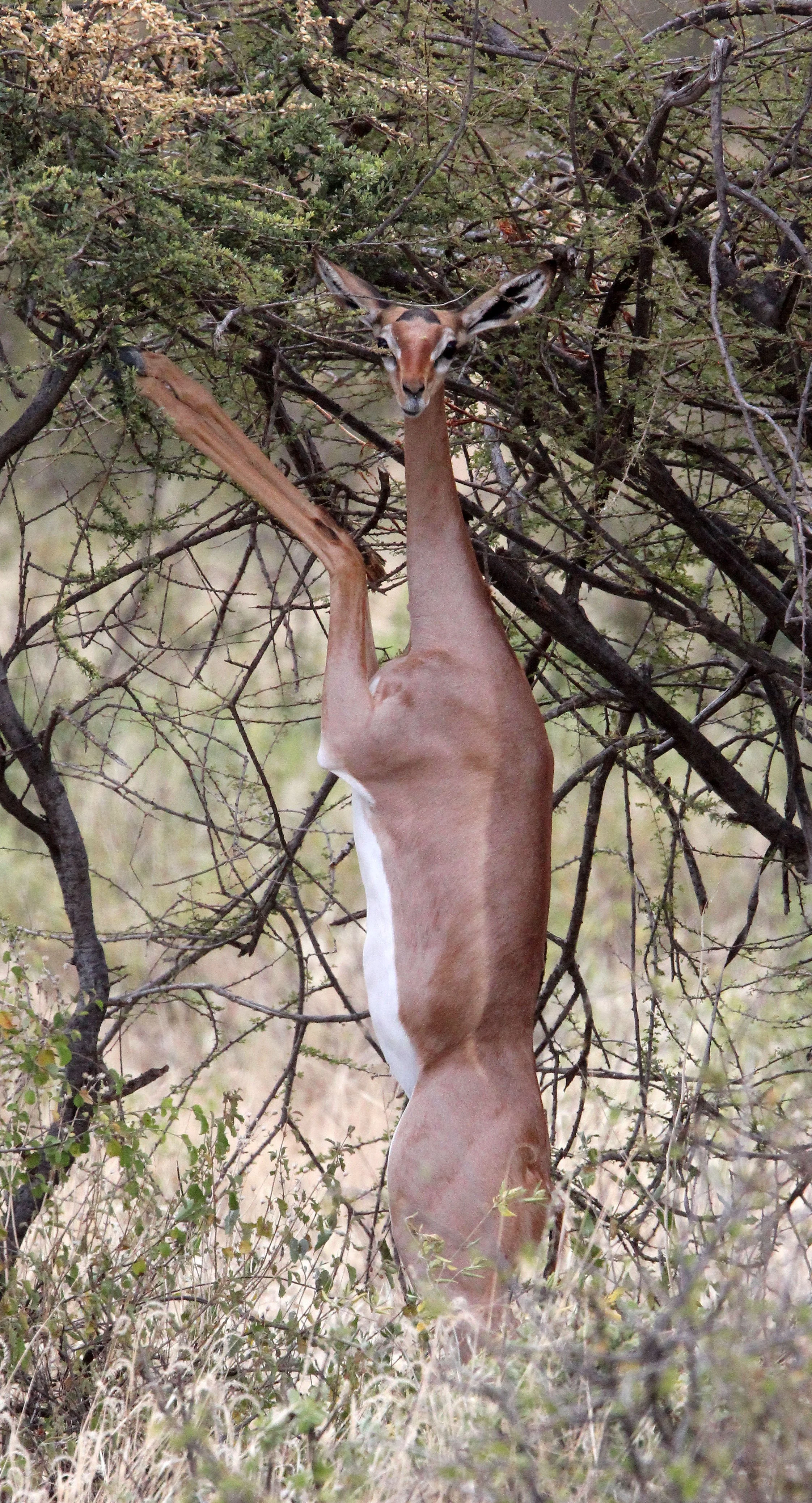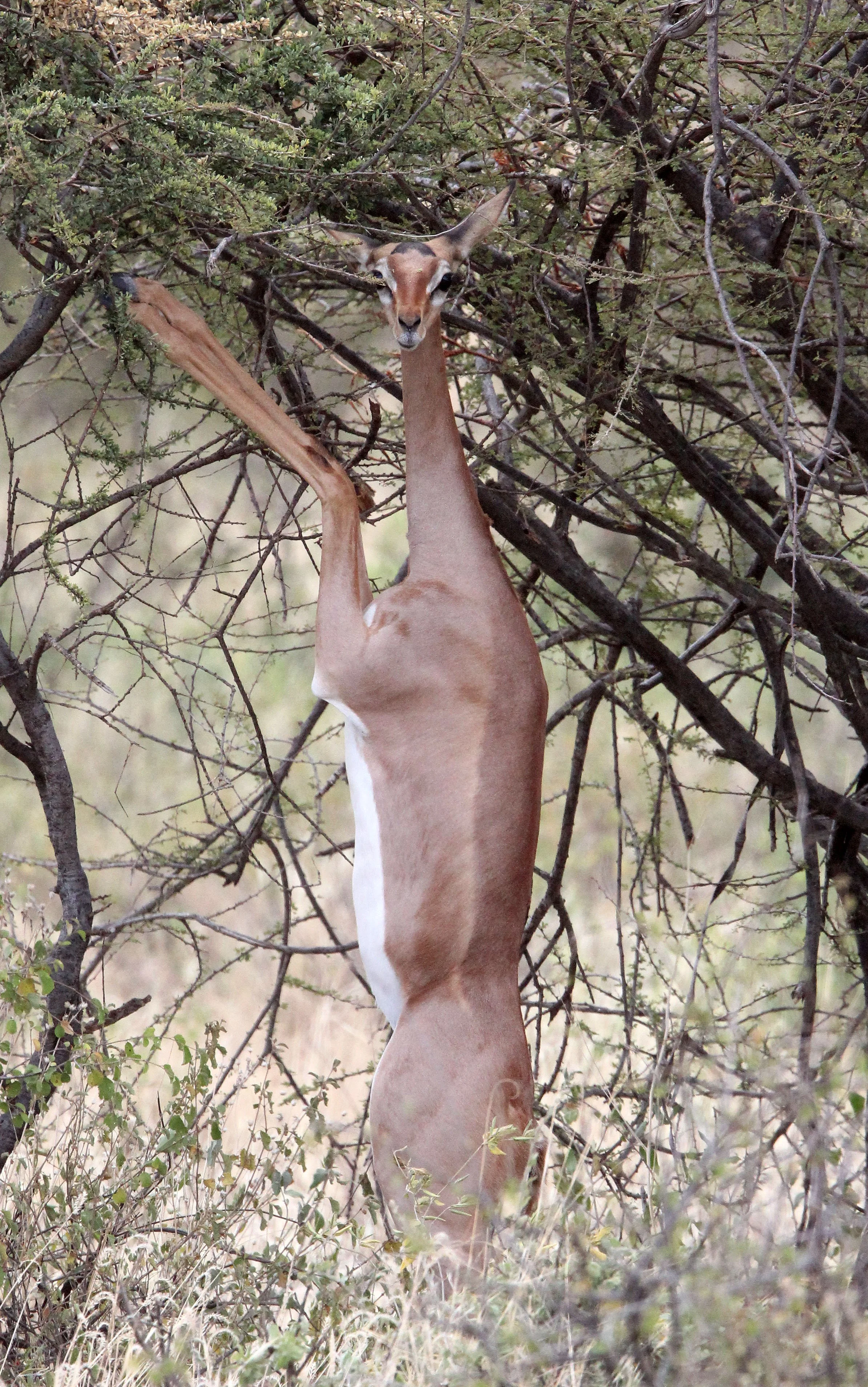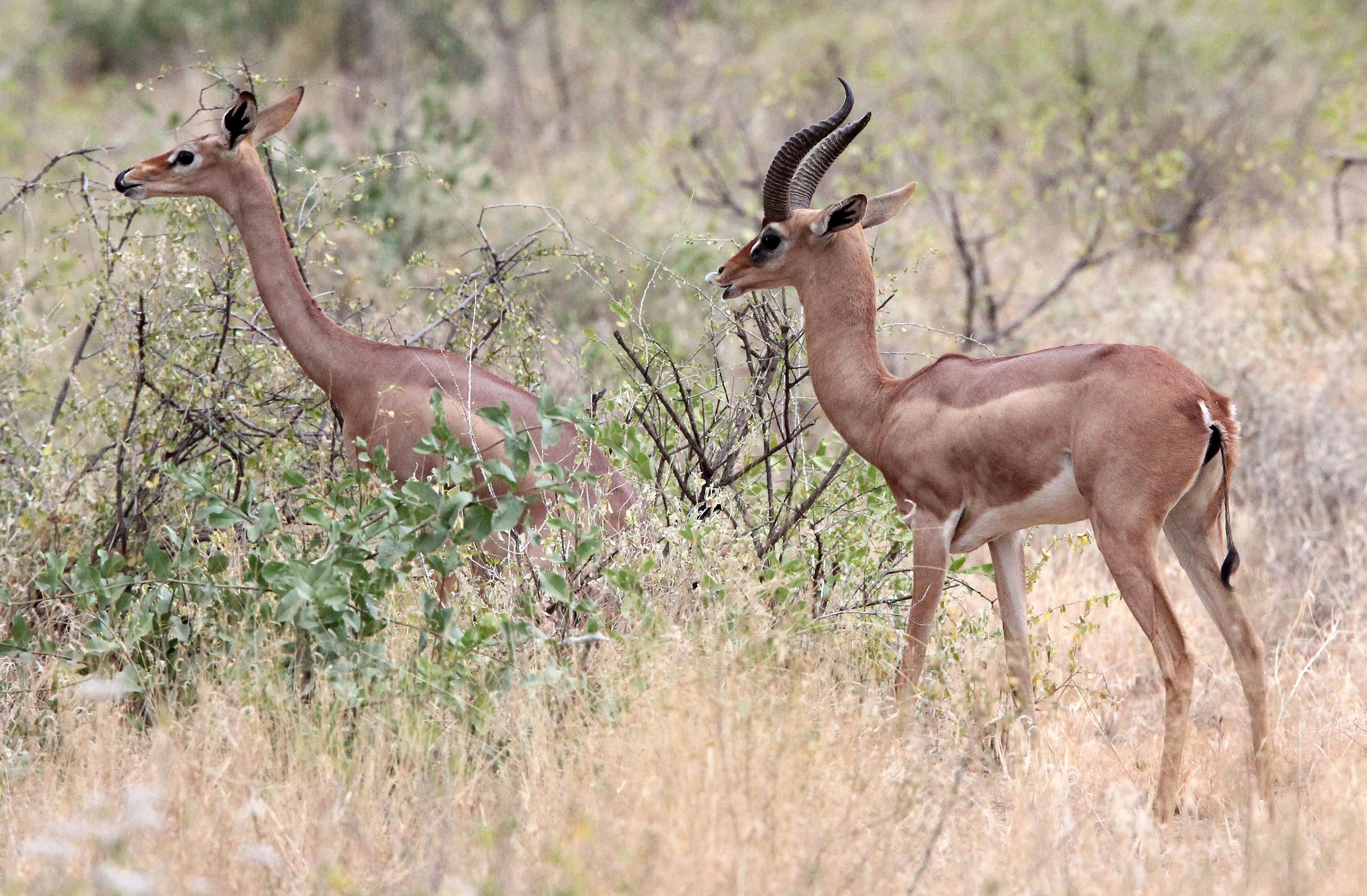
The Gerenuk (Litocranius walleri), also known as the giraffe gazelle, is a long-necked antelope found in parts of East Africa. The sole member of the genus Litocranius, the gerenuk was first described by the naturalist Victor Brooke in 1879. It is characterised by its long, slender neck and limbs. The antelope is 80–105 centimetres (2 feet 7 inches – 3 feet 5 inches) tall, and weighs between 18 and 52 kilograms (40 and 115 pounds). Two types of colouration are clearly visible on the smooth coat: the reddish brown back or the "saddle", and the lighter flanks, fawn to buff. The horns, present only on males, are lyre-shaped. Curving backward then slightly forward, these measure 25–44 cm (10–17+1⁄2 in).
The gerenuk was first described by Victor Brooke in 1879 on the basis of three male specimens procured on "the mainland of Africa, north of the island of Zanzibar". Brooke used the scientific name Gazella walleri, on the request of Gerald Waller (who provided the specimens) to name it after his deceased brother. The type locality was later corrected by John Kirk, who originally obtained the specimens on the "coast near the River Juba in southern Somalia" before giving them to Waller. In 1886, Franz Friedrich Kohl proposed a new genus for the gerenuk, Litocranius. The common name derives from the Somali name for the animal (gáránúug); the first recorded use of the name dates back to 1895. It is also known as the "giraffe gazelle" due to its similarity to the giraffe.
Two subspecies have been proposed, but these are considered to be independent species by some authors.
L. w. sclateri (Northern gerenuk or Sclater's gazelle) Neumann, 1899: Its range extends from northwestern Somalia (Berbera District) westward to touch the Ethiopian border and Djibouti.
L. w. walleri (Southern gerenuk or Waller's gazelle) (Brooke, 1879): Its range extends through northeastern Tanzania through Kenya to Galcaio (Somalia). The range lies north of the Shebelle River and near Juba River.
In 1997 Colin Groves proposed that Litocranius is a sister taxon of the similarly long-necked dibatag (Ammodorcas clarkei), but withdrew from this in 2000. A 1999 phylogenetic study based on cytochrome b and cytochrome c oxidase subunit III analysis showed that the tribe Antilopini, to which the gerenuk belongs, is monophyletic. In 2013, Eva Verena Bärmann and colleagues (of the University of Cambridge) revised the phylogeny of tribe on the basis of nuclear and mitochondrial gene analysis. The cladogram prepared by them (given below) showed that the springbok (Antidorcas marsupialis) forms a clade with the gerenuk; this clade is sister to the saiga (Saiga tatarica, tribe Saigini) and the genera Antilope (blackbuck), Eudorcas, Gazella and Nanger (of Antilopini).
Southern Gerenuk (Litocranius walleri) - Common in Shaba and other locations close by in Kenya
















































































Northern Gerenuk (Litocranius solateri) - Ali Dege Ethiopia



















